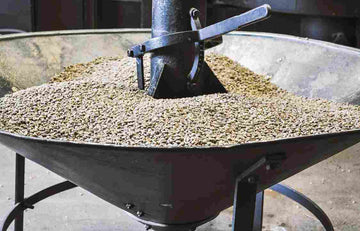
A coffee bean travels a long journey from the tree it grows on to your mug. Along the way, it passes through many hands to be harvested, processed, sold, roasted, packaged, and brewed, and with journey that comes an entire dictionary of terms and jargon. We have put together a glossary to help you navigate coffee vocabulary and better understand the coffee bean.
Origin - The country the coffee is grown in.
Region - The geographical region that is serviced by the cooperative.
Fair Trade - Fair trade is a certification issued by fair trade organizations, such as the Fairtrade International label. Producers seeking this certification must meet a set of criteria that govern minimum prices, workers’ rights, and sustainability standards. This certification helps ensure ethical sourcing, as it prohibits exploitative practices such as child or forced labour. Anyone wishing to use this designation, such as farmers or importers, must apply, provide documentation, and pay a fee. More info here.
Single Origin - One coffee variety from a single farm or cooperative. More info here.
COOP - A coffee cooperative is a group of coffee producers in a specific region cooperating to gain better access to resources, such as processing plants and distribution, information and training, and leverage better marketing and business opportunities.
Primary Coops, Secondary Coops, and Farmers
Some large COOPs, such as the SCFCU and Cenfrocafe are a COOP made up of COOPs. We refer to the large coop as the primary coop and the coops within those the secondary coop. The secondary coops are made up of farmers who come together to sell coffee to roasters like Equator.
Producer - Farmers/Producers are the teams of people on the ground growing, harvesting, and processing the coffee.
Varietals - The type of coffee grown - there are many more varieties than Arabica and Robusta!
Processing - The method in which farmers remove the layers of pulp and parchment surrounding the coffee bean in preparation for selling. Different processing methods impact different characteristics in the final product. Learn more here.
Washed - “Washed” coffee otherwise known as the “wet method” is the most common method for processing coffee. Within 24 hours of getting harvested, the cherries are carried by water and pass through a pulping machine which presses the cherry to remove the pulp from the bean. The beans are then sorted and stored in fermentation tanks for up to 48 hours to naturally remove any remaining mucilage from the papery parchment. The beans will then be dried, either by the sun or in mechanical dryers.
Unwashed - "Natural" processed coffee, also known as "sundried” or "unwashed" follows a different process. Instead of immediately taking the pulp off the coffee cherry as is done with "washed" coffee, this process dries the coffee without depulping and hulls it after it's completely dry. Leaving the fruit on the pit during the drying process allows it to pick up all the fruity flavours of the pulp. Naturals are known to have pronounced flavours such as blueberry muffin, strawberries, and wine.
Honey Processed - Honey processed coffee gets de-pulped like in the ‘washed’ method, but instead of removing the sticky mucilage in the fermentation tanks, they go immediately to the drying beds. The remaining mucilage is sticky, sweet, and golden - just like honey. Hence the name! Beyond being delicious, this also benefits coffee producers by using less water than washed processing. Honey processed coffees bare more complexity than washed coffees, but tend to be less fruit-forward than natural coffees.
Coop Coffees - A green buying cooperative that connects coffee roasters and coffee producers.
Cherry - The fruit of the coffee tree that houses the coffee bean (what we’re after!)
Roast level - The level to which the coffee is roasted, which determines its body, flavour, and aroma.
Bloom - Saturating freshly ground coffee beans with water allowing the gasses containing the coffee’s flavour and aroma to come through.
Espresso - Coffee roasted with the intention of being used as espresso is roaster longer and hotter. This reduces the acidity and helps achieve the perfect body and mouthfeel for the coffee. When you order an espresso at a cafe, you will be presented with 1-2 ounces of concentrated coffee that’s brewed using an espresso machine. An espresso machine brews coffee using a low ratio of coffee to water and high pressure to create a silky smooth and rich coffee.
